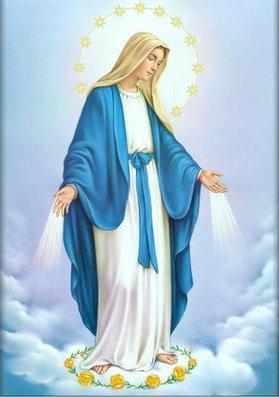Ps 222: Introduction to Solid State Physics by Dr. Eduardo C. Cuansing
April 16, 2014 Leave a comment
ATENEO DE MANILA UNIVERSITY
COURSE SYLLABUS
COURSE NUMBER: PS 222
INSTRUCTOR: Dr. Eduardo C. Cuansing
COURSE TITLE: Introduction to Solid State Physics
OFFICE: Faura 305
CREDITS: 3 units CONSULTATION HOURS:
SEMESTER: Summer EMAIL: ecuansing@ateneo.edu
ACADEMIC YEAR: 2014 – 2015
COURSE SCHEDULE: MTWThF, 2:00 pm – 3:00 pm
CLASSROOM: TBA
COURSE DESCRIPTION:
This is an introductory course in Solid State Physics for physics graduate students who have not previously taken an equivalent undergraduate course. It aims to develop a good understanding of the basic principles and behavior of solid state systems as well as introduce some of the theoretical tools used in understanding such systems. Topics to be discussed include the electron energy bands, quasiparticles, classical waves in a medium, quantized waves, interactions of quasiparticles, group theory, susceptibility, many-body perturbation theory, and coherence and correlation in quantum systems.
COURSE OBJECTIVES:
By the end of this course, the student should:
- have familiarity with some of the basic principles and theoretical approaches to understand solid state systems, their components, and the consequences of the interactions among these components.
- be able to explain how some of the physical properties of solid state materials arise from the structure and interactions of their constituents.
- be able to perform theoretical calculations and derivations of certain phenomena and the properties of specific solid state materials.
- be able to identify some of the essential, but simplifying, components of a physical system that could lead to the dominant features observable in an experiment
COURSE TEXTBOOK:
D.W. Snoke, “Solid State Physics: Essential Concepts”, Addison-Wesley, 2009.
COURSE REFENCES:
- N.W. Ashcroft and N.D. Mermin, “Solid State Physics”, Brooks/Cole Cengage Learning, 1976.
- C. Kittel, “Introduction to Solid State Physics”, 8th Edition, John Wiley & Sons, 2005.
Chapter 1. Electron Bands. Bloch’s Theorem, Kronnig-Penney Model, Crystals and Bravais Lattices, Density of States, Tight-Binding Approximation, Nearly-Free-Electron Approximation, the
Chapter 2: Electronic Quasiparticles. Quasiparticles, Effective Mass, Excitons, Fermi Gas, Semiconductors and the Mott Transition, Band Bending and Heterojunctions, Quantum Confinement, Superlattices, Two-Dimensional Electron Gas, Landau Levels, De Haas-Van Alphen Oscillations, Shubnikov-De Haas Oscillations, Quantum Hall Effects
Chapter 3: Classical Waves in Anisotropic Media. The Linear Chain Model, Vibrational Modes, Acoustic Waves, the Christoffel Wave Equation, Electromagnetic Waves and Maxwell’s Equations, Interfaces, Photonic Crystals
Chapter 4: Quantized Waves. The Quantized Harmonic Oscillator, Phonons, Photons, Coherent States, Field Operators, First-Order Time-Dependent Perturbation Theory, the Quantum Fokker-Planck Equation, Energy Density of Solids, the Debye-Waller Effect k p Theory
Chapter 5: Interactions of Quasiparticles. Electron-Phonon Interactions, Electron-Photon Interactions, Rayleigh Scattering, Phonon-Phonon Interactions, Electron-Electron Interactions, Thermal and Electrical Conductivities, the Boltzmann Transport Equation
Chapter 6: Group Theory. Groups and Representations, Outer Products, Allowed and Forbidden Transitions, Spin and Time-Reversal Symmetry
Chapter 7: The Complex Susceptibility. Kramers-Kronig Relations, Polaritons, Nonlinear Optics, Photon-Phonon Interactions, Raman Scattering
Chapter 8: Many-Body Perturbation Theory. Higher-Order Time-Dependent Perturbation Theory, Polarons, Line Broadening, Feynman Perturbation Theory, Self-Energy, Green’s Functions, Screening and Plasmons, Exchange and Correlation Energy of Fermions, Vacuum
Chapter 9: Coherence and Correlation. Density Matrix Formalism, the Block Equations, Quantum Coherent Effects, Correlations in Quantum Mechanics, Particle-Particle Correlation, the Fluctuation-Dissipation Theorem, the Nyquist Formula, the Kubo Formula, Mesoscopic Effects
GRADE CALCULATION:
- 3 Long Exams …………………………………..…… 60 %
- Homework …………………………………………… 15 %
- Final Exam ……………………………………………. 25 %
GRADING SYSTEM:
- A 92 – 100
- A- 86 – 91
- B+ 77 – 85
- B 69 – 76
- B- 60 – 68
- C Below 60
If there is some extra time left near the end of the semester, the following topics can be discussed: The Ising Model, Critical Phenomena, Renormalization Group Methods, Spintronics, Bose-Einstein Condensation, Superconductivity, and Optical Coherence.


